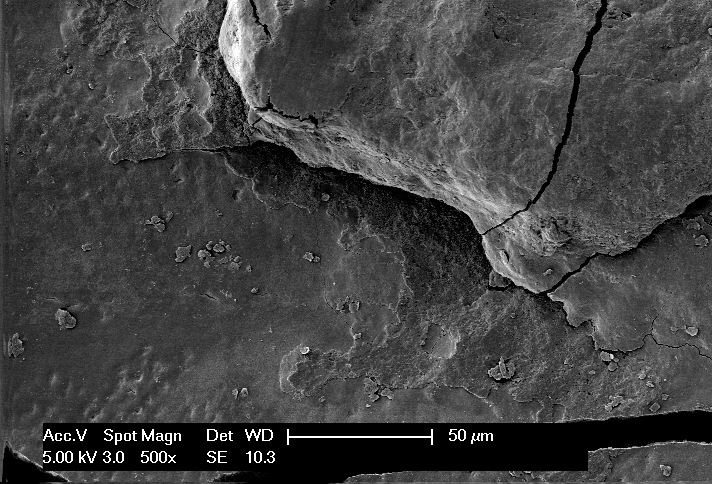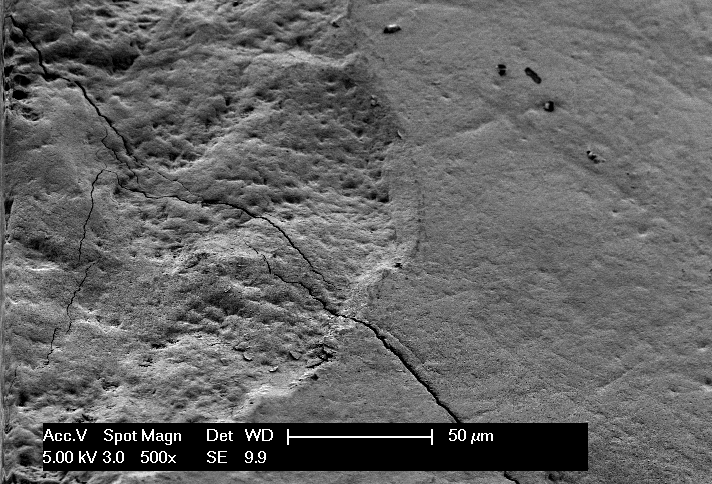Dr. Marcel Donnet and Dr. Dixit Neha discuss how GBT can overcome the challenge of tartar removal to preserve your teeth for life
Have you ever looked closely at your teeth in the mirror? When looking carefully, we can sometimes see white or coloured deposits, often around the lower part of the front teeth. These deposits are commonly named as calculus or tartar.
What do these deposits indicate? Is it essential to get rid of them? If regular brushing doesn’t do the trick, how can we effectively remove tartar? And, importantly, how can we prevent its build-up in the first place?
Dental prophylaxis
All these questions are addressed by the concept of “prophylaxis”; in essence, action is taken to prevent disease. So, prevention instead of treatment.
Dental prophylaxis is also gaining popularity because maintaining a clean and healthy mouth supports oral health and forms the cornerstone for whole-body well-being. The link between oral health and overall health is well documented.
From its inception in 1981, EMS (Electro Medical Systems) of Switzerland recognised that excellent oral health is essential, driving its innovations to make professional teeth cleaning gentler and more efficient.
Collaborating with researchers and dental professionals, EMS pioneered Guided Biofilm Therapy (GBT). This approach effectively and thoroughly eliminates plaque (or biofilm) and calculus (tartar).
Using an eight-step protocol and disclosing techniques, patients undergo diagnosis, are educated and encouraged to improve their oral hygiene efforts at home, and receive treatment that feels akin to a wellness experience.
GBT ensures patients are equipped with the proper knowledge for home care and, when combined with gentle yet effective professional cleaning methods, offers the optimal strategy to preserve natural teeth for a lifetime.

The tartar challenge
Bacteria in the mouth thrive to survive. They unite to form a resilient structure known as a biofilm to combat antibacterial measures. This biofilm offers double protection: firstly, an extracellular matrix serves as a primary shield; secondly, the outer layer of bacteria provides an additional defence for the inner bacteria.
Over time, the extracellular matrix mineralises to strengthen its shield, forming a robust barrier against chemical or mechanical threats. This hardened matrix is what we commonly refer to as “tartar”.
Tartar (calculus) effectively acts as a fortress for bacteria, allowing them to grow and function unhindered by any attempts by the host to clean their teeth. One particularly harmful action of these bacteria is the production of acid. This acid can erode and demineralise the tooth’s surface, exposing fragile enamel beneath the tartar. Consequently, when tartar is removed, it can expose cavities in the enamel that cannot naturally heal.
Enamel deterioration is gradual. It is widely accepted that tartar needs to be present on the tooth surface for about two years to cause permanent damage. To maintain our teeth throughout our lives, individuals are, therefore, advised to undergo professional prophylaxis at least once a year. This ensures that the teeth remain in a condition without lasting harm.
Tartar is commonly seen near the openings of the salivary glands: these ducts are behind the lower front teeth and around the upper molars.
Additionally, tartar often begins to form in areas where routine home care is more challenging, such as teeth that are misaligned.
While various tools are available to address these problematic areas, ensuring complete protection against tartar build-up remains a significant challenge.
How do professionals tackle these robust bacterial defences?
Historically, tartar removal involved manual techniques. Depending on how firmly the tartar adhered, the practitioner often needed to apply significant force to dislodge it. This wasn’t a pleasant experience for the patient, who might feel like their teeth were being tugged at, nor was it comfortable for the professional who had to exert significant pressure.
However, the introduction of GBT has transformed the patient and practitioner experience, ensuring a more comfortable prophylaxis process.
The initial step involves using AIRFLOW® PLUS Powder, which helps to remove all biofilm, including those in the mineralisation stage that haven’t fully hardened. This approach not only helps in identifying and isolating the hardened tartar but also offers a comfortable experience for patients, as they barely feel the powder when applied as recommended.
The game changer in efficiently removing this hard tartar without discomfort for both the patient and the practitioner is the PIEZON® PS NO PAIN technology. Instead of relying on manual force, this technology uses an instrument that moves at ultrasonic speeds, achieving 30,000 oscillations in just one second. These rapid motions gently impact the tartar effectively and consistently (‘mini impacts’) without damaging the tooth structure, breaking and removing hard deposits quickly and effortlessly, with the device itself providing the necessary force.
While various types of instruments move in different ways, the unique feature of the PIEZON® PS, as incorporated in the GBT protocol, is its perfect linear motion. This characteristic is crucial for ensuring maximum comfort for the patient. The tool’s swift ‘mini impacts’ could potentially harm and cause discomfort to the teeth if directed incorrectly. As a result, dental professionals must ensure they move the instrument parallel to the teeth, enabling comfortable removal of the tartar layers that accumulate on the enamel.
If the instrument exhibits erratic or circular motions, some of the impact force can strike the tooth directly, which can be a source of discomfort for patients during ultrasonic treatments. This can also risk damaging the enamel during the procedure.
As previously highlighted, tartar often begins to accumulate in areas like the spaces between teeth or where the gum meets the tooth. These areas offer limited accessibility for daily home care tools, hence the need for slender, fine-tipped instruments. The PS Instrument used during the GBT process fits this requirement perfectly.
Preserving healthy teeth for a lifetime
From the patient’s perspective, using PIEZON® PS stands out as the preferred method due to its superior comfort and efficacy.
It is crucial to remember that the battle against oral bacteria is ongoing, and since tartar can cause permanent harm, meticulous removal during professional cleaning is paramount for long-term oral health.
GBT allows professionals to achieve thorough and efficient tartar removal with specialised ultrasonic instruments, offering patients a comfortable and virtually painless experience.
In essence, Guided Biofilm Therapy protocol represents the optimal solution for preserving healthy teeth for a lifetime.

This work is licensed under Creative Commons Attribution-NonCommercial-NoDerivatives 4.0 International.


